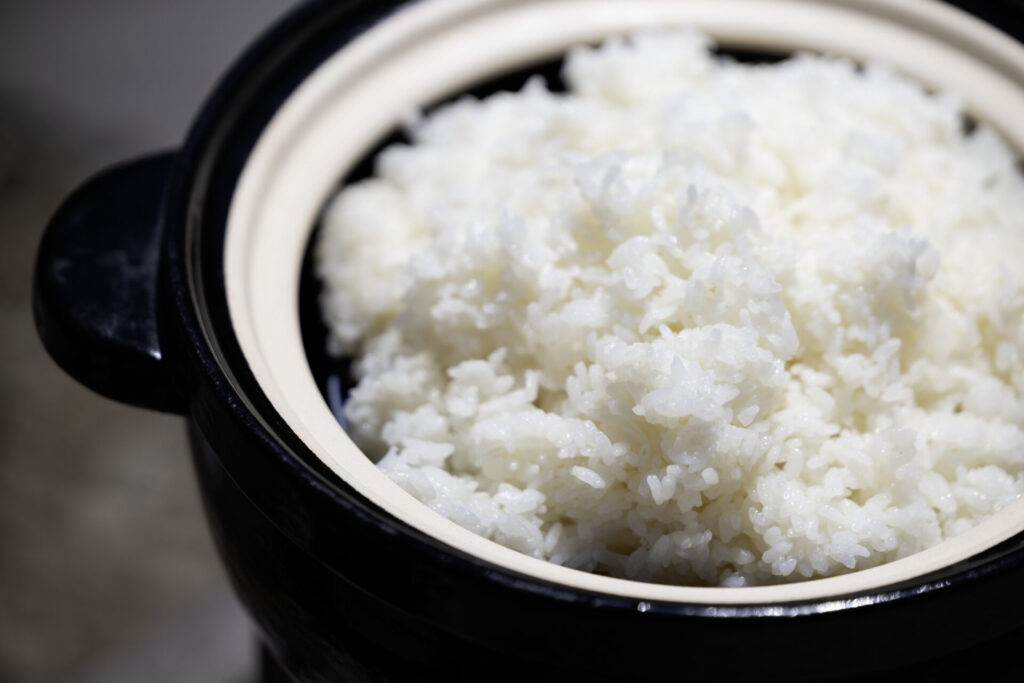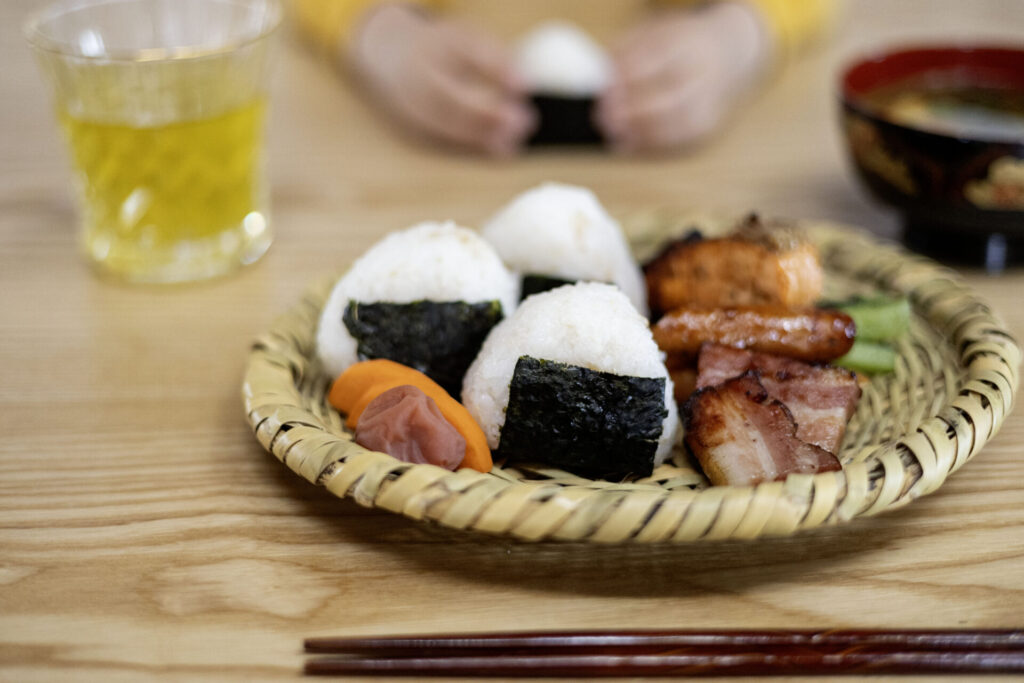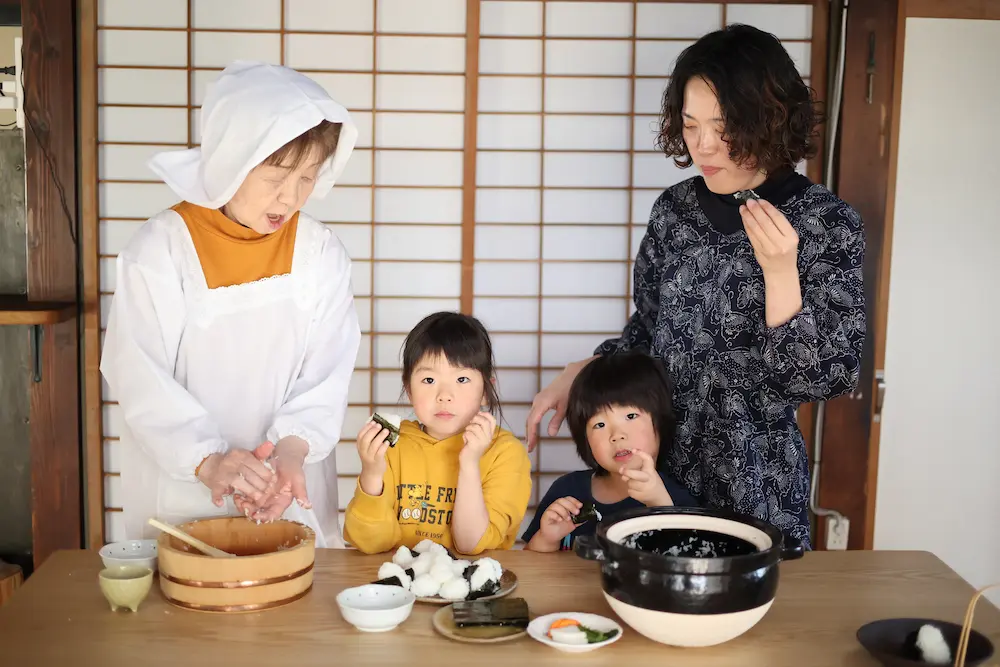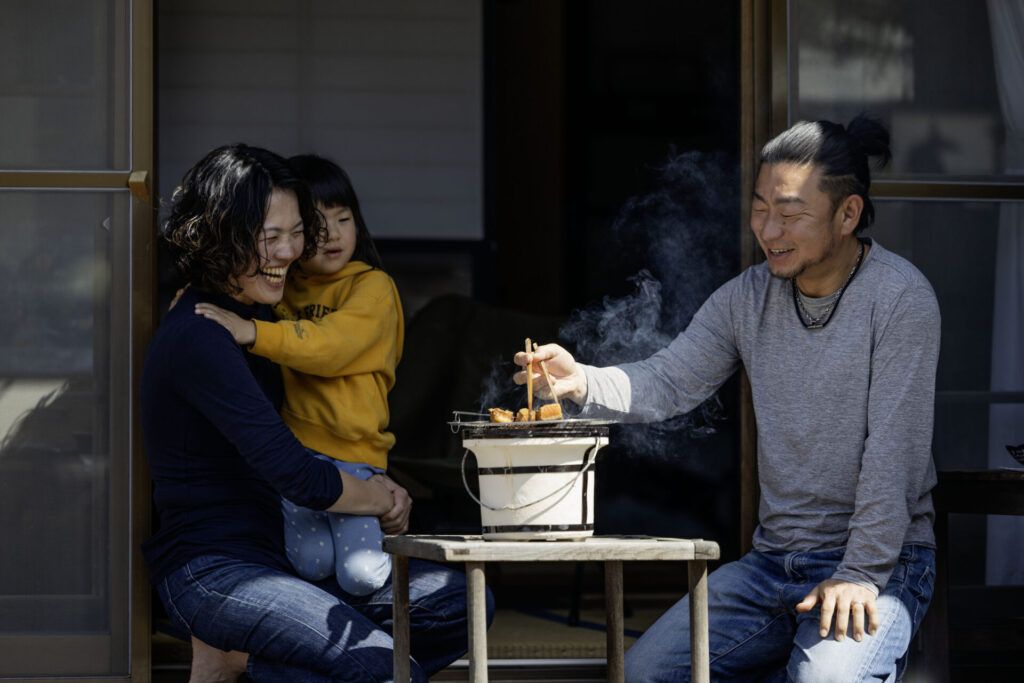Deep Connection
When I recall the onigiri my mother or grandmother used to make for me as a child, I can still feel the warmth of their hands and the soft heat of the rice. For Japanese people, onigiri is more than just a food—it’s a tool that stirs up nostalgic memories of life.
Imagine looking out the window of a Shinkansen, watching rural landscapes pass by, while taking a bite of an onigiri. That single scene captures a traveling moment. Onigiri naturally finds its way into meals not just because it’s easy to carry and eat, but also because it has long been cherished and woven into the fabric of everyday life.
The Origins of Onigiri and Its Spread in Japan

The history of onigiri dates back to the Heian period. At that time, it was known as tonjiki, used by aristocrats as portable food during their journeys. In the Sengoku period, it was valued as a source of energy for samurai, rebranded as nigirimeshi, and found its place on battlefields.
By the Edo period, onigiri had spread among the common people and was sold at street stalls. In modern times, the rise of convenience stores has made it easier than ever to enjoy a wide variety of onigiri.
A Multitude of Fillings and Excellent Nutrition

Although simple, onigiri is highly nutritious. You get carbohydrates from the rice, plus vitamins and minerals from the fillings and nori. For instance, salmon onigiri provides protein and omega-3 fatty acids, while umeboshi (pickled plum) aids in recovery from fatigue.
Rice pairs well with countless fillings, so you can adapt onigiri to many situations—based on health goals, personal tastes, or different occasions. Another appeal is the wide assortment of fillings. Besides classics like umeboshi, salmon, dried bonito flakes (okaka), and kelp (konbu), you now see choices like salmon with mentaiko cream cheese, ikura (salmon roe), or even wagyu beef. The variety is so extensive, it can be hard to pick just one.
Beloved Abroad

As Japanese food gains international attention, onigiri has joined sushi and ramen as one of the most popular dishes overseas. Specialty onigiri shops have opened in New York, London, and Paris, offering flavors like tuna mayo, Spam, and teriyaki chicken—easy favorites for newcomers.
Anime and manga also play a role in popularizing onigiri to foreign audiences. For example, in the anime Pokémon, the main character Satoshi is often shown eating onigiri during his journey; in some foreign versions, these were humorously renamed “donuts.”
In Studio Ghibli’s Spirited Away, there’s a memorable scene where Chihiro, separated from her parents, receives onigiri from Haku and eats it tearfully. This kind of cultural content has heightened interest in onigiri around the world.
Coexistence of “Mom’s Cooking” and the Convenience Store

Onigiri represents both the comfort of home cooking—known as ofukuro no aji—and a modern meal easily found at convenience stores.
Homemade onigiri is special, reflecting each family’s preferred salt level and rice texture, steeped in memories. Meanwhile, convenience store onigiri is a strong ally for those leading busy lives today. You can almost always find them wherever you go, and they’re available in various shapes: the classic triangle or cylindrical roll, and new styles like onigirazu, which sandwiches fillings between layers of rice like a sandwich.
Across countless everyday settings in Japan—on a Shinkansen seat, a park bench, or at the office—onigiri makes frequent appearances. It’s a simple, unchanging taste of Japan. Yet this small, handheld delight is packed with an enduring love passed down through the ages, along with the essence of Japanese food culture.
So deeply woven into Japanese life, onigiri will continue to evolve, satisfying both appetites and hearts for years to come.
